When done correctly, your brand identity will be a defining factor in standing out from your competitors. To build this unique identity from scratch is no easy feat, however, once implemented it will help your audience resonate with you and in turn, grow your business. In fact, with consistent brand representation, your revenue can increase by up to 33%.
The end goal is to have a brand that is instantly recognizable, and one of the best ways to ensure this is to develop a comprehensive brand book so you can remain consistent across all channels.
“Branding is about seizing every opportunity to express why people should choose one brand over another.”
—Alina Wheeler, Designing Brand Identity: An Essential Guide for the Whole Branding Team
From startup to enterprise, building a solid brand identity has the potential to be the difference between leaving an imprint on the minds of your audience, and being forgotten. This is your ultimate guide to building a brand book, covering what it is, and why is it important.
What is a brand book?
A brand book is your business’s identity, outlining the company’s mission, values, and overall image in the market. It is a guide that helps ensure all the intricate nuances of your brand are consistent and correct across all channels. For example, it usually includes the style and tone of copywriting, photography used, and other details like fonts and color schemes.
Why every business needs a brand book
A brand book aims to ensure all stakeholders understand your business and all that it stands for. Ideally, you want your employees to be able to speak to why the business exists, what sets you apart from the others, and why customers need your product. Additionally, you want customers to recognize your company’s brand, mission, and ethos. The earlier you create your brand book, the faster you can ensure brand consistency and grow brand awareness.
“Without a strong identity as a company, it can be difficult to attract new clients and keep existing ones loyal to your brand. A brand book helps you define who you are as a business and how that reflects on the products or services you provide. It also helps you establish specific messages for your target audience so that those messages resonate with them emotionally," shares Adrian Carter from Beastly Energy.
The sign of a successful brand book is that once established, it becomes a one-stop shop for your company's visual and verbal identity. It turns into a valuable resource for your entire team, from current employees to onboarding new team members or briefing outside agencies.
In the words of Howard Schultz, the CEO of Starbucks, “if people believe they share values with a company, they will stay loyal to the brand.” Your brand book will help create a connection and reach customers who align with your brand's personality, voice, and values. When creating a brand identity, spend time conducting market research to ensure you are resonating with the target market.
What to include in a brand book
Every business is different, so each brand will want to include its nuances. As a base, start with the following:
Brand name, brand story, mission, and ethosThis is an important inclusion as it assists with engaging employees and potential customers, and also helps your company to uphold and practice these values.
Highlight how your company came to be, what the driving factors were to create the product or business, what your business stands for, and how your product solves people’s problems.Brand logoIn this section include an outline of what your logo represents, all variations of the logo (print, non-print, when to use different colors), and when they should be used, plus the dimensions and proportions.
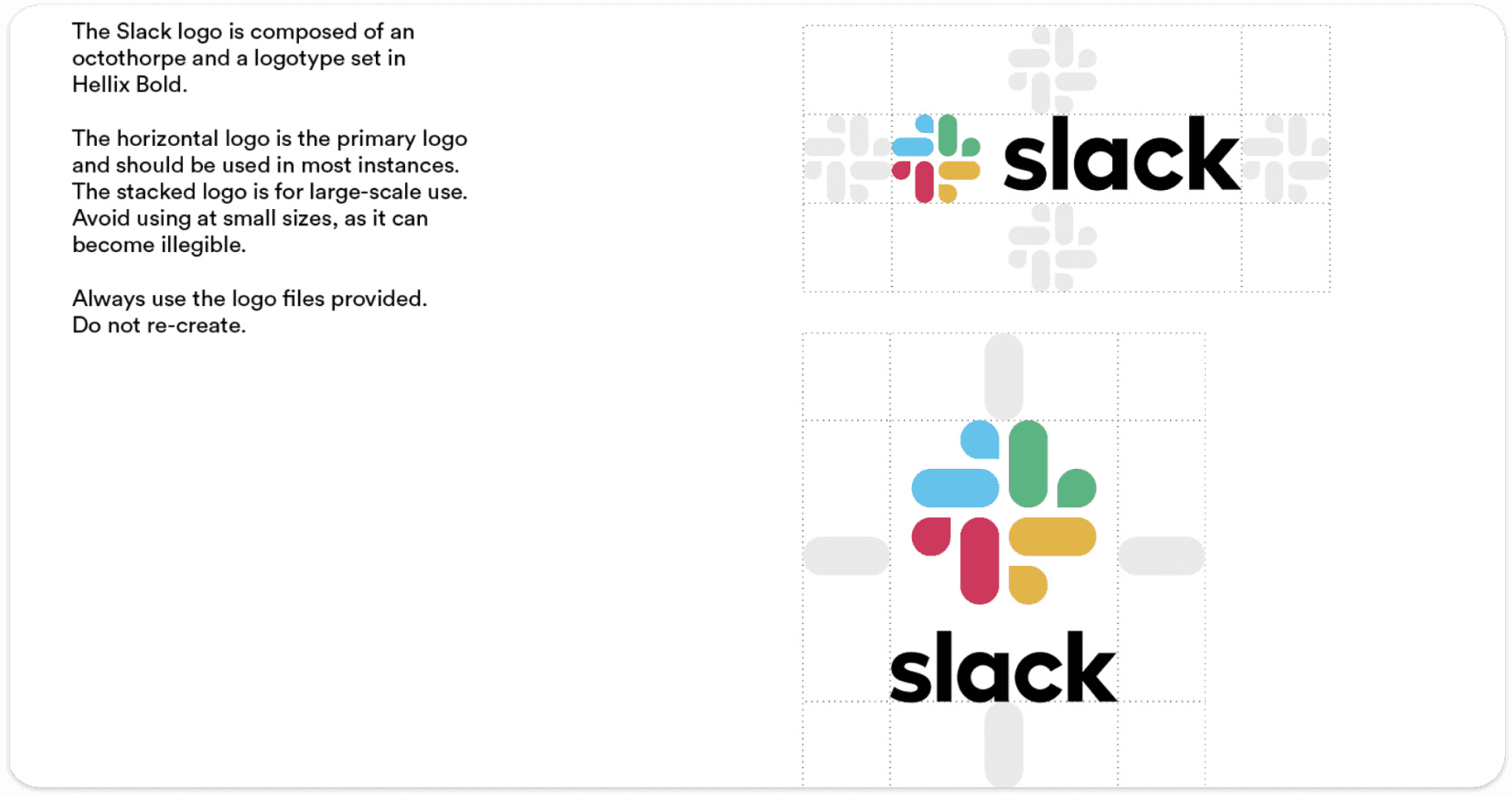
IconographyInclude all the icons used across your website and marketing materials. Be specific with how and when they should be used, the dimensions, and any specifics on the color palette.
Color scheme
Your brand colors are powerful in solidifying brand personality at first glance. Colors can symbolize certain feelings, so to create a memorable brand, do your research and choose colors that will speak to your target audience. There are generally two palettes:The primary palette - These are the dominant colors that will express your brand identity.
The secondary palette - These will be less commonly used but, equally as important for ensuring you have enough diversity and contrast to play with, especially in channels like social media platforms.
Tip: Make sure you include the exact name and HEX & RGB code for each color to ensure they are matched correctly.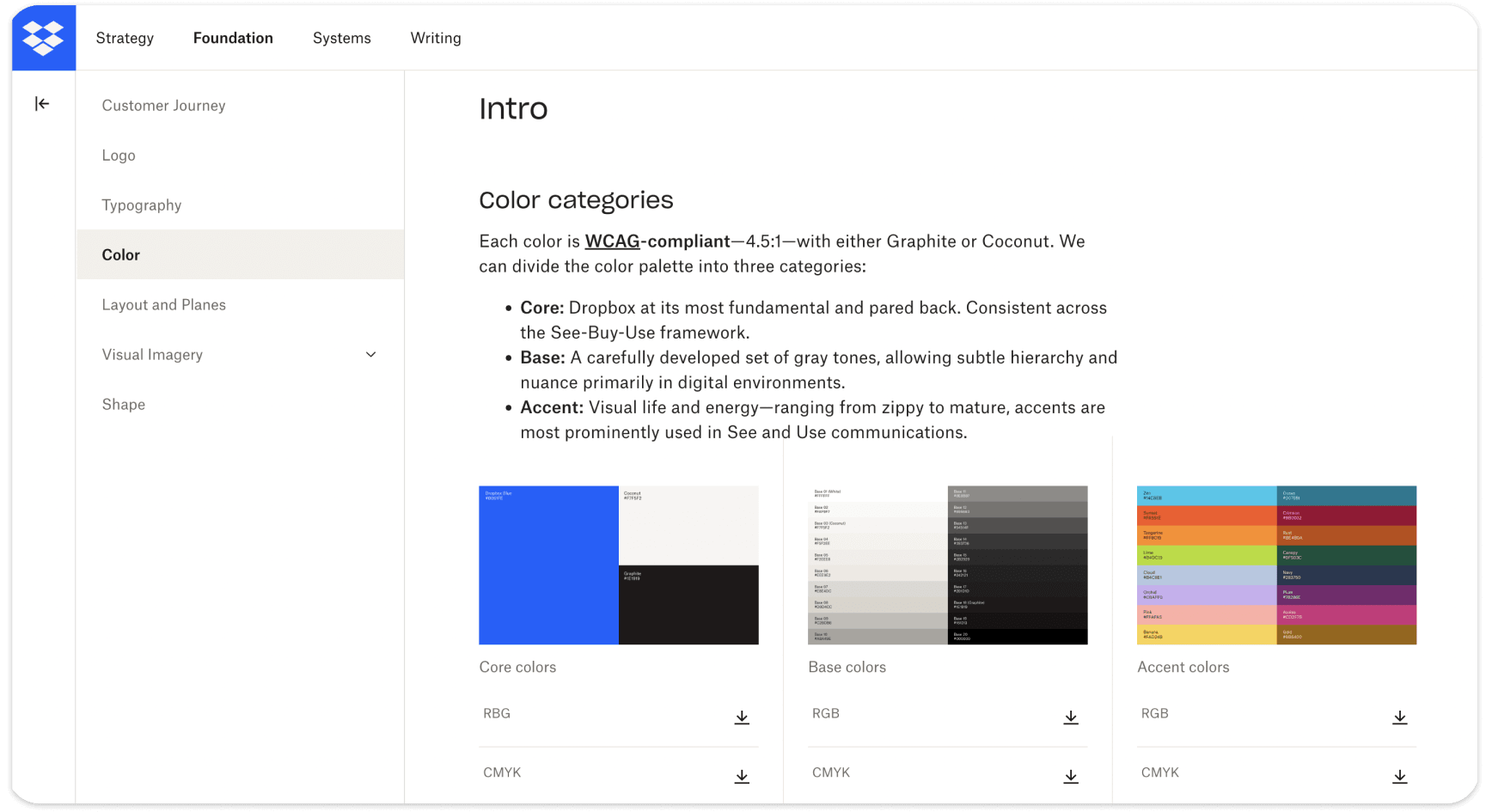
TypographyChoosing fonts can be difficult — they need to encapsulate who and what you are as a business. You may want to consider different styles of font for the following:
Heading - This is your hero font, used for major headlines and ad copy. It is generally used in shorter, larger-format copy, so you have a bit more flexibility in terms of readability.
Subtitle font or fonts - A subtitle font should match well with the heading, and should be easy to read and recognizable.
Body font - This font will be used for all sorts of copy purposes, including long-form copy. It needs to be very easy to read.
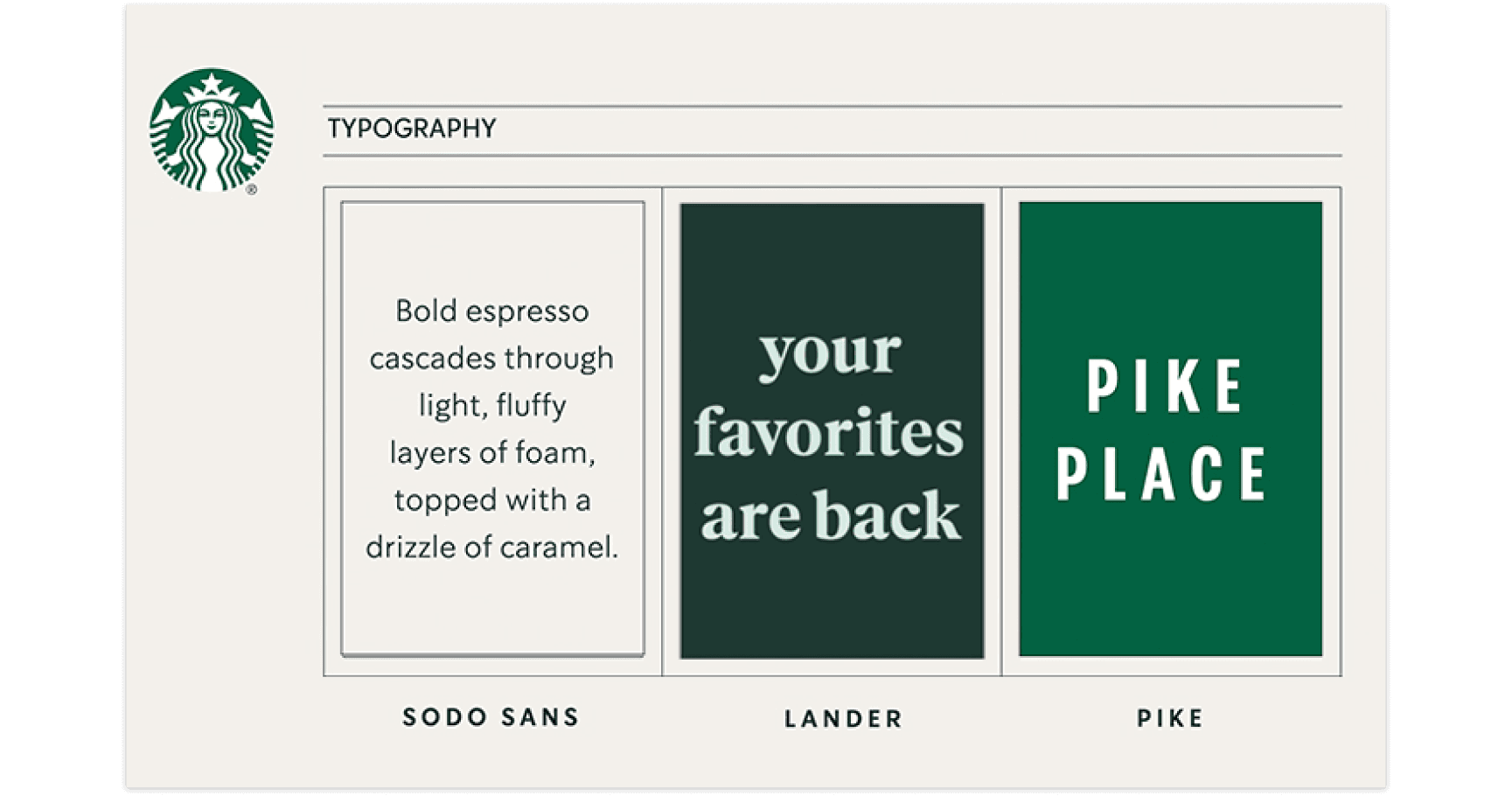
Imagery
Here you want to show the photography and graphics that reflect the brand, including do’s and don’ts with image examples. Finalize whether your brand will have specific filters, blurring, or contrast applied to each image.
Brand voice and tone
How do you want to communicate with your audience? In this section, outline language do’s and don’t’s, formatting, style preferences, and the tone — for example, formal or informal, fun or professional. Choose the type of language and dialect for example, English (American) or English (Australian).
“These guidelines ensure consistency and readability of your content anywhere online, and it's crucial to be clear and firm about them in your brand book.
—Josh Tyler, CEO of Giant Freakin Robot
Tips for building a brand book
Know your target audience
It’s integral that your brand speaks to the type of customers you want. Spend time conducting market research so you know exactly who you want to attract as customers. This will help build out your tone of voice, choice of imagery, and even which communication channels to focus on.
Audit your competitors
If you want to create a memorable brand and catch the attention of your customers, a great place to start is auditing your competitors.
Make a list of your key competitors, then visit their website, follow their social media channels, and sign up for their mailing list. Then take notes of what you like or don’t like, and what seems to be engaging. Also, note the primary color palette of these competitors and, to help your brand be distinctive, steer clear of similar color sets.
It’s also helpful to look at strong brands (outside your industry), and what aspects of their brand could work for your business. By spending time researching all different companies, you can build your own unique, recognizable brand identity.
Define your brand personality
Your brand personality is a set of human characteristics that you give your brand, it's designed to help create a sense of connection with a specific target group. You will give your brand a set of distinctive features like values, hobbies, humor, sincerity, and candor.
This personality helps build the unique voice of your product, differentiates your brand from competitors, helps resonate with your ideal audience, and even works at fostering brand loyalty. One of the most common models to use when developing your brand personality is Aakers five-dimensional model. Brands usually choose one to two primary traits and focus on these as their core personality dimensions.
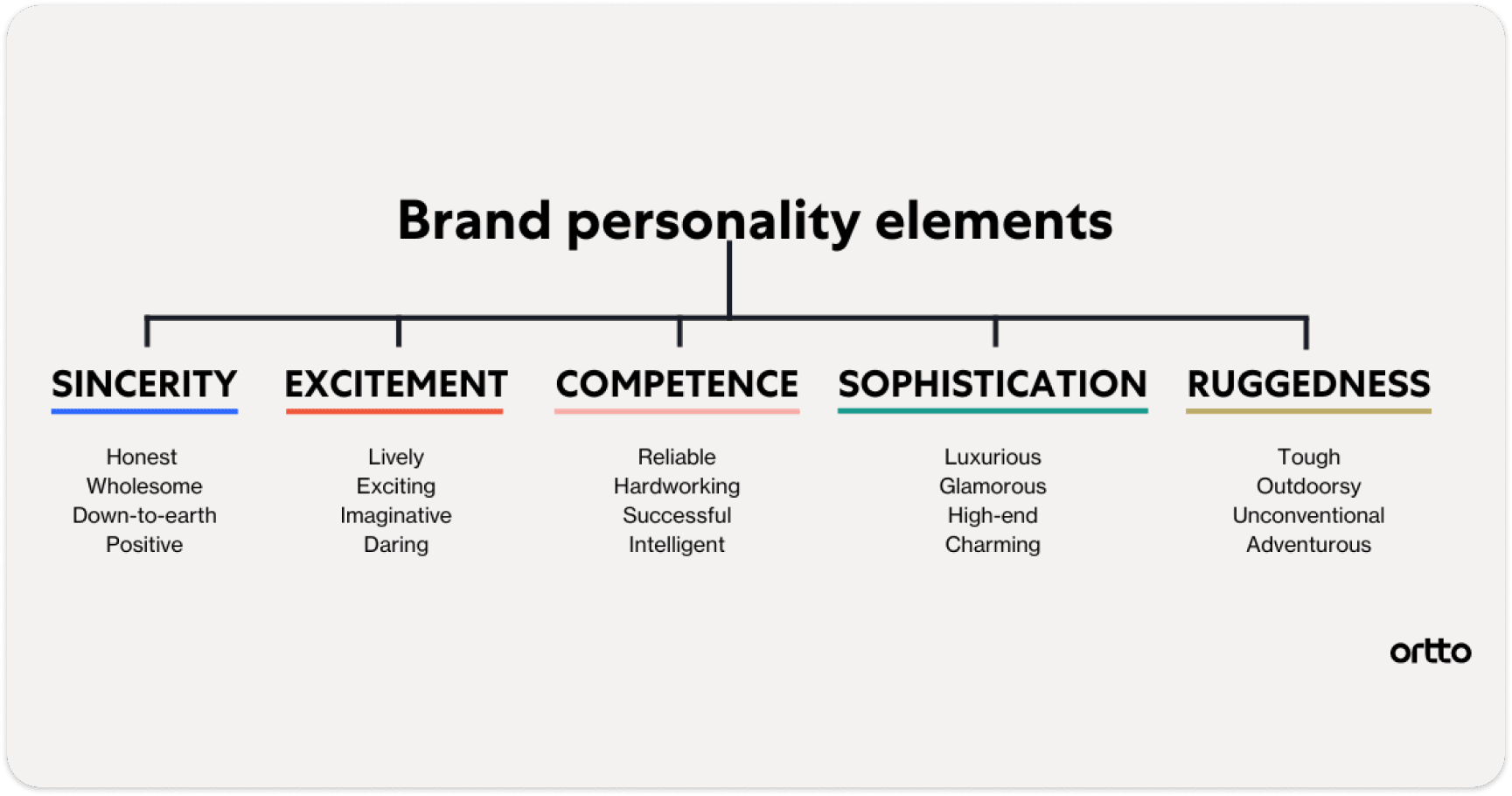
Keep your brand book cohesive
Take a step backward to ensure your brand identity is aligned across the multiple factors within your brand book. For example, if your color palette is based on bright colors, your brand personality is lively and inclusive, but the writing style is corporate and full of tech jargon, this causes misalignment that could make your brand hard to understand or remember.
Be clear and coherent
Set your brand book up for success by adding as much detail as possible, including all the different iterations of your logos, iconography, and color palettes. By doing this, any internal or external stakeholder will be able to clearly understand how your brand should show up on any channel (for example, website, emails, social media, sales collateral).
Vlad Stoica, the Head of Design at Stoica.co, has found that sharing best practice examples within your brand book is the best way to ensure consistency. “Use lots of pictures and examples of detailed usage of the brand - in the end, an image is worth 1000 words. Seeing the brand in use is the best way to help someone duplicate it and help to communicate the right message."
"Create the brand book using the same rules as your brand materials to reinforce the visual style and tone of voice you want to create,” he shared.
Ensure brand accessibility
Whether you’re developing your brand book from scratch or doing a complete brand refresh ensure that you’re considering the Web Content Accessibility Guidelines (WCAG).
These guidelines are designed to help you make your web content (i.e text, images, sounds, and website code) are accessible to everyone. For example, the guidelines include a minimum contrast between background and font colors to ensure your web content is accessible for those using screen readers or any other adaptive technology.
Live by your brand mission
Brands today are being held accountable for their corporate values and actions, so be sure that the ethos you decide on is something that your company not only believes in but will practice.
Embracing your company’s ethos will help build a positive and trustworthy brand image. This will strengthen your reputation and even set you apart from your competitors.
Evolve your brand book
There needs to be a level of scalability when developing your brand book. Every brand and product evolves, and your brand identity will need to be adaptable enough to evolve with it. Your brand book should reflect these changes, small or large, to ensure they are applied across the board.
Netflix is a great example of this. As a startup, it was a rent-by-mail DVD platform, and as the company shifted its product offering, the branding changed to match. You can see in the example below, that once brand awareness reached a pinnacle, Netflix was able to move to the 'N'.
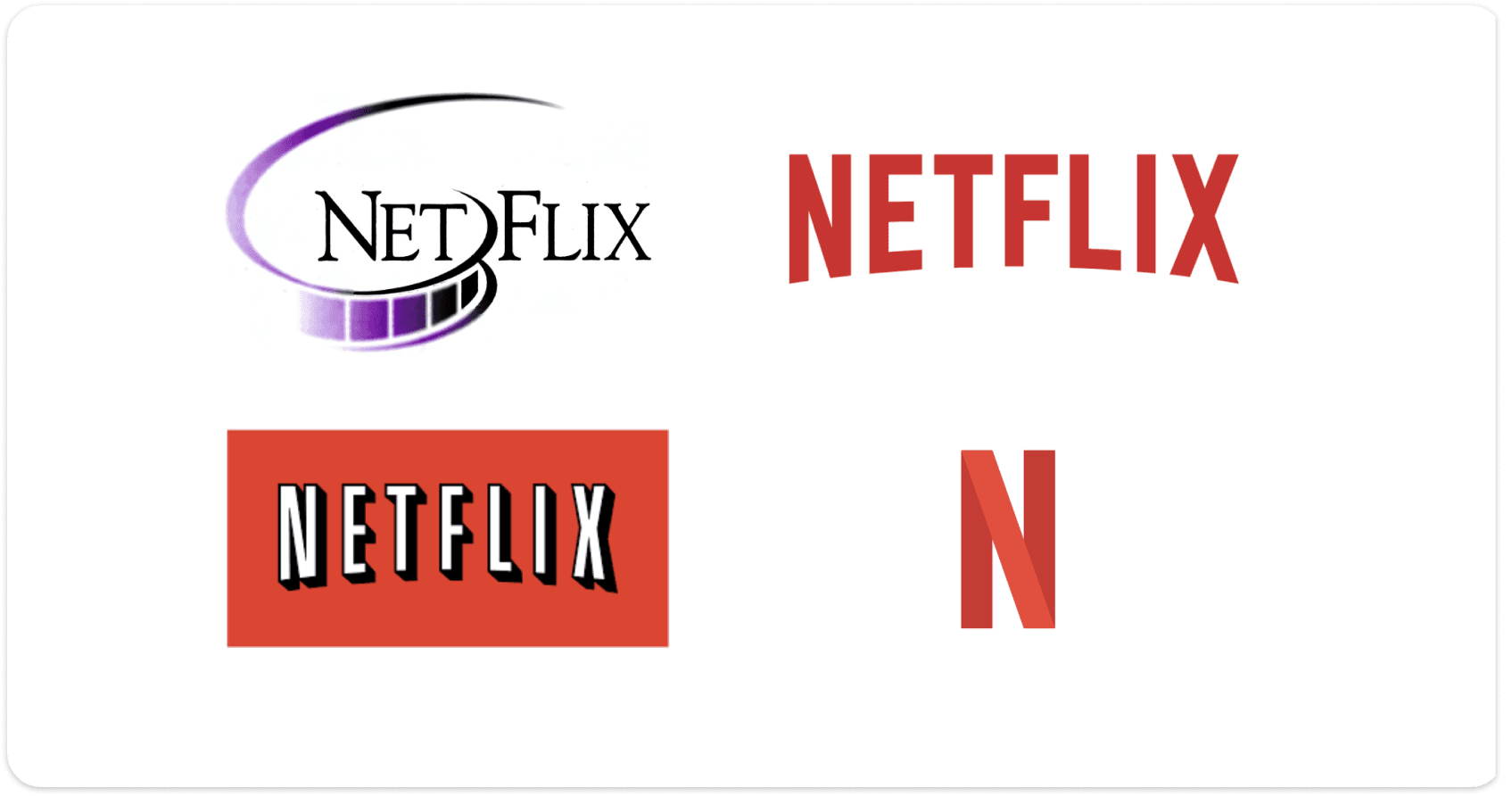
How Ortto can help you build and enforce your brand book
Ortto’s brand book feature empowers your entire team to always create and send on-brand messages. This feature will allow you to customize the appearance of your email campaign messages, as well as capture widgets placed on external data source sites.
Set your brand colors, logos, fonts and typography, button appearance, as well as footer colors, to ensure every message that gets sent looks and feels like you.
As you onboard and start to fill in your business name and website URL, Ortto will find your company and brand components and start filling in key parts of your brand book. For example, your logo, brand colors, and even typography can all be collected and stored in your profile, so you can start designing your first campaign from the get-go.
Here are some other features from Ortto’s brand book that will help you keep consistent:
Define your brand palette
Set your brand palette in Ortto's brand book builder to ensure that every email and capture widget represents your brand. Use hex codes or the color picker to create a default brand book that everyone in your company can stick to.
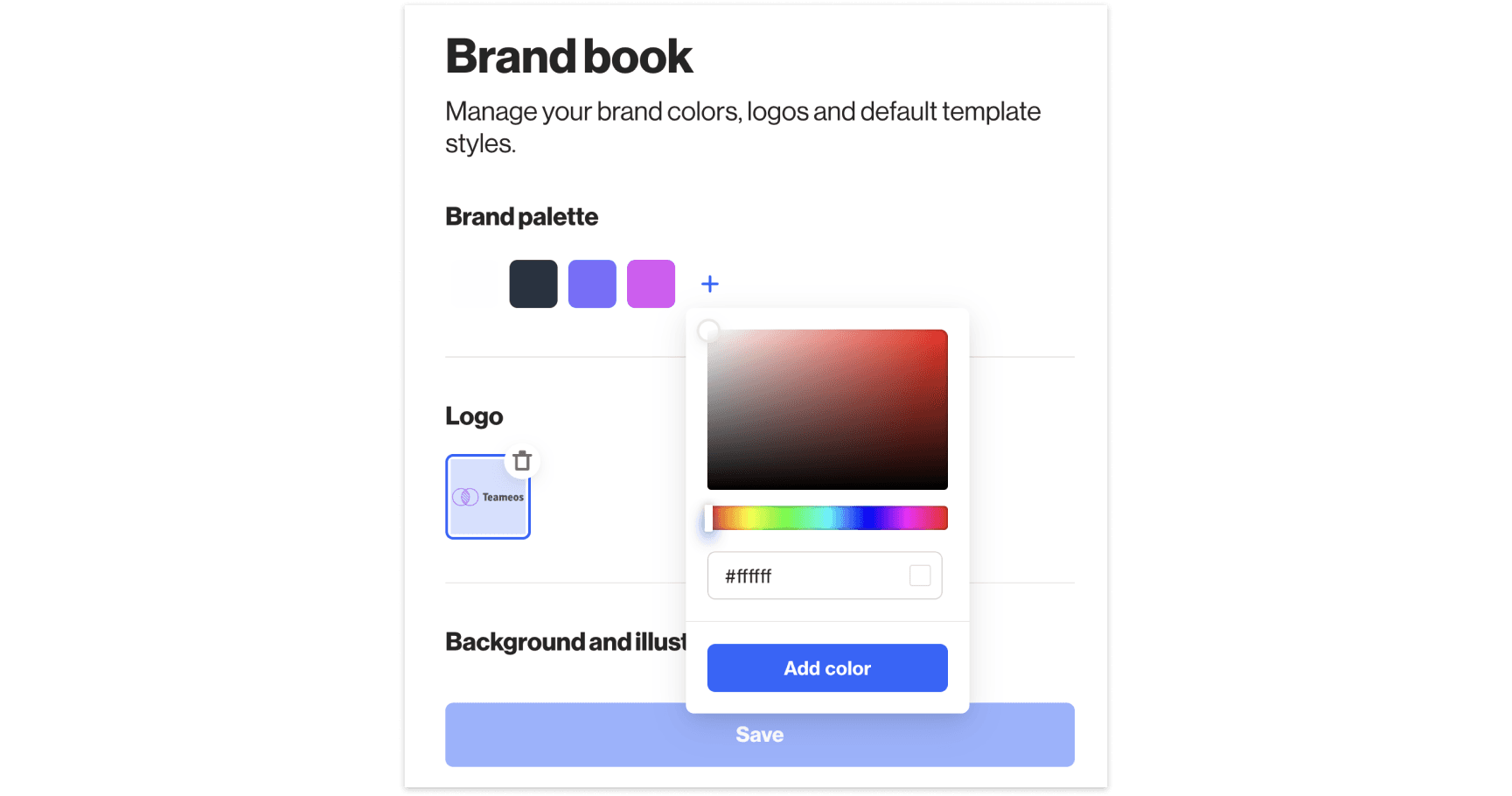
Customizable email footers
The email footer is your brand’s signature, it needs to be customized to fit with your brand identity. Set your email footer up in template settings, and use the brand book to change the color of reaction icons, social icons, text, and fill.
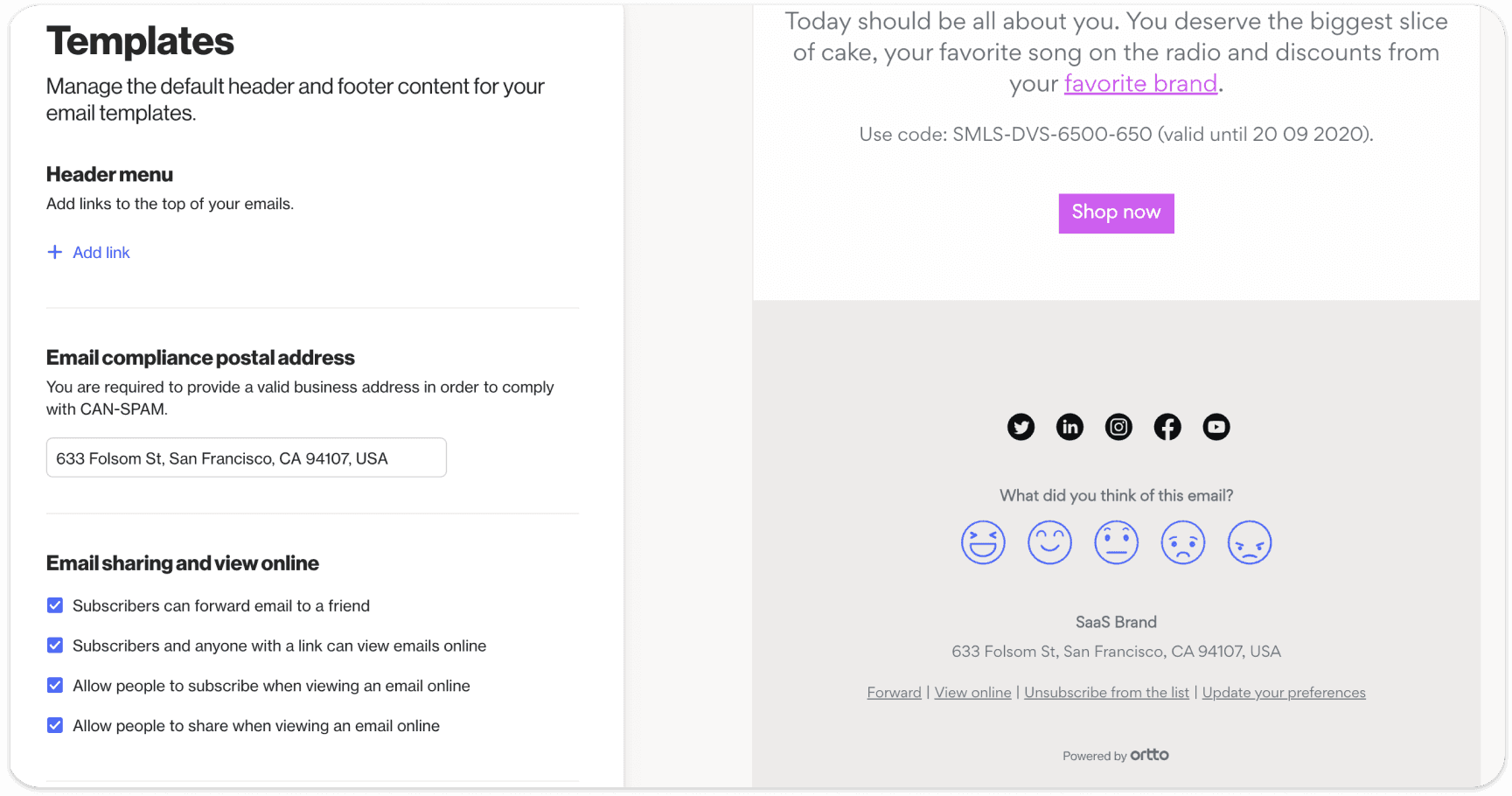
Enhanced typography settings
Anyone, regardless of their design experience, can create a beautiful email or popup with typography settings that go deeper than font selection. Choose from font packs including minimal, energetic, youthful, or bold, or upload custom fonts. Set a heading size, body size, and even line height to achieve pixel-perfect designs.
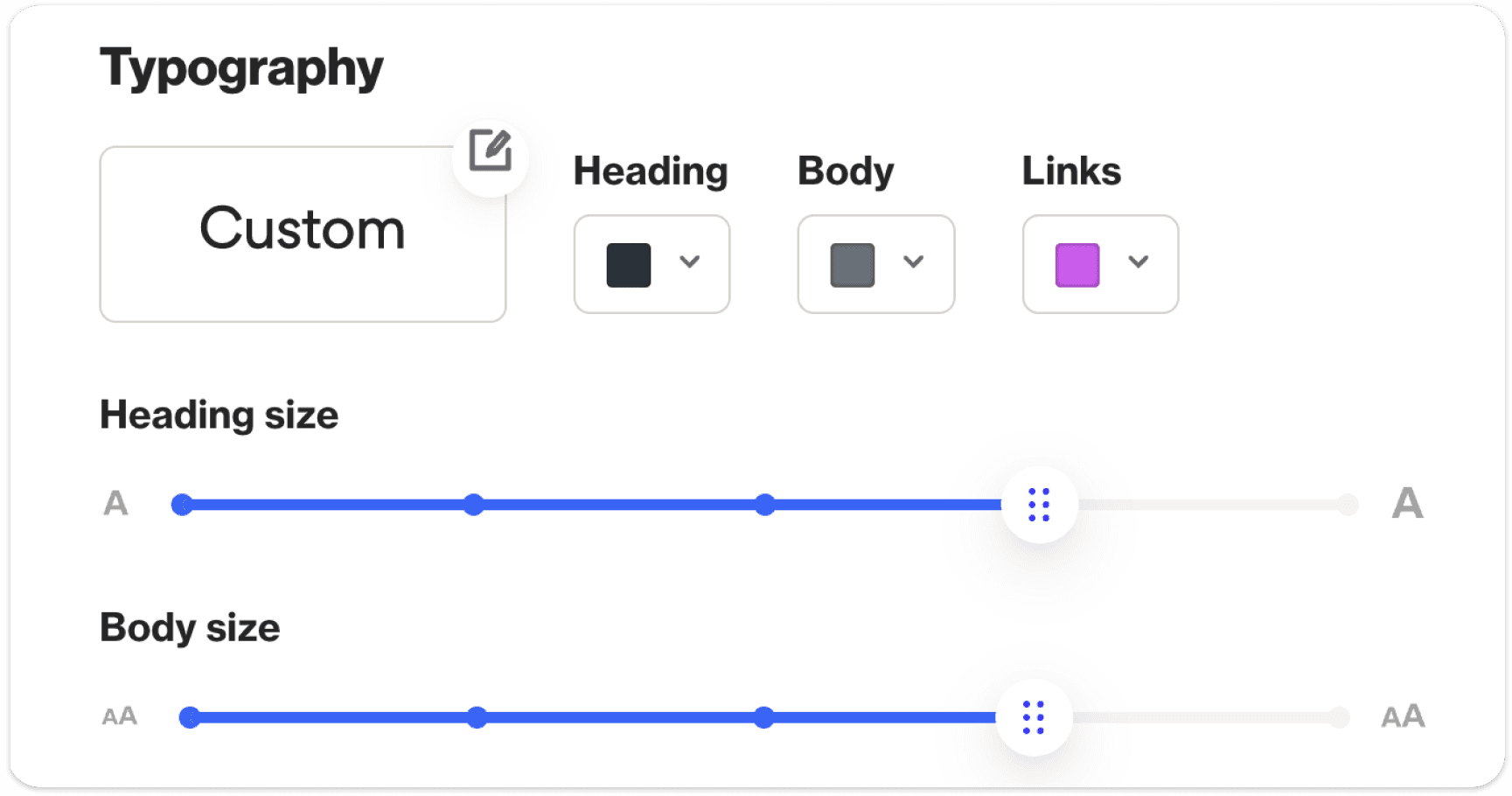
Apply consistent web buttons
Ensure your customers take action by creating a consistent button style. Choose a shape as well as fill, border, and text color. Ortto will enforce your button style across communications.
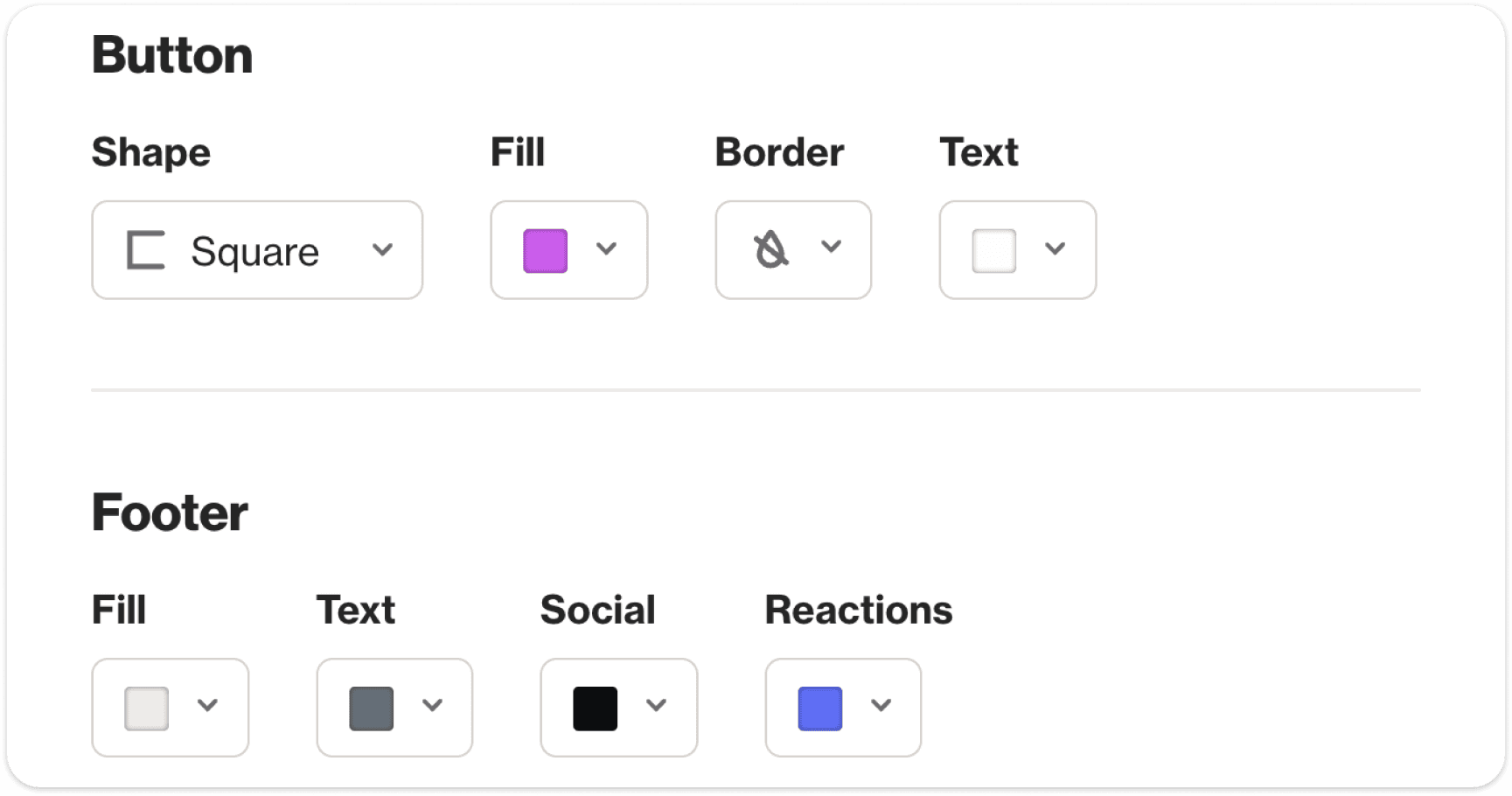
Ensure brand alignment, every time
From customizing email templates to capture widgets, or building them from scratch, Ortto will ensure all your elements follow the brand specifications you created.
Final word
Spending time developing, refining, and communicating your brand identity is crucial for businesses at every size and stage. After all, an investment in brand is an investment in the future and longevity of your business.
Author

More by Meagan Philpot
Meagan Philpot has no more articles


